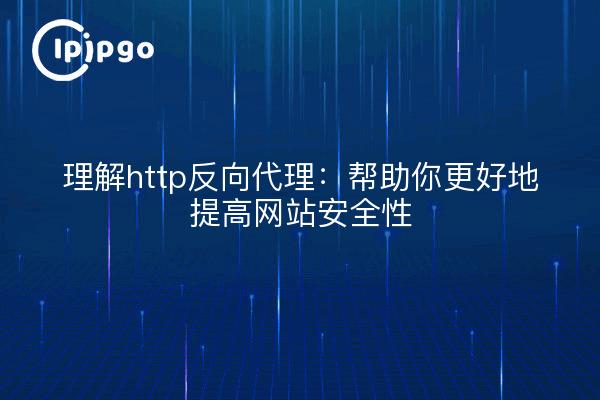
Understanding HTTP Reverse Proxy
Proxy servers are a common technology in web architecture, and HTTP reverse proxy is one particular application. It plays an important role in the modern Internet, helping to improve the security, performance and scalability of websites. Next, we will delve into the concept of HTTP reverse proxy, how it works and its benefits.
1. What is an HTTP reverse proxy?
An HTTP reverse proxy is a proxy server that sits between a client and one or more backend servers. Unlike traditional forward proxies (client-side proxies), reverse proxies represent servers rather than clients. In other words, a client request does not know which specific server its request is being sent to, but rather it is first sent to a reverse proxy server, which in turn forwards the request to the actual back-end servers.
2. HTTP Reverse Proxy How it works
The HTTP reverse proxy workflow can be simplified into the following steps:
- The client sends an HTTP request to the reverse proxy server.
- The reverse proxy server receives the request and forwards it to one or more back-end servers, depending on the configuration.
- The back-end server processes the request and generates a response, which is returned to the reverse proxy server.
- The reverse proxy server returns the response to the client.
In this process, the client does not know which server is actually handling the request, and all requests and responses are relayed through the reverse proxy.
3. Advantages of HTTP Reverse Proxy
HTTP reverse proxies offer a number of advantages that make them increasingly popular in modern network architectures:
- Load Balancing:Reverse proxies can distribute requests to multiple back-end servers to achieve load balancing and improve overall system performance and reliability.
- Security:By hiding the real IP address of the back-end server, the reverse proxy can effectively prevent direct attacks and enhance the security of the website. In addition, the reverse proxy can implement SSL encryption to protect data transmission.
- Cache function:Reverse proxies can cache common requests and responses, thus reducing the burden on back-end servers and improving response times.
- Centralized management:Through the reverse proxy, you can centralize the configuration and security policies of multiple back-end servers, simplifying operation and maintenance.
4. Common application scenarios for reverse proxies
HTTP reverse proxies are widely used in several scenarios:
- Site Acceleration:By caching static resources, reverse proxies can significantly improve the loading speed of a website.
- API Gateway:In microservice architectures, reverse proxies are often used as API gateways, responsible for request routing, load balancing, and security control.
- Content Delivery Network (CDN):Reverse proxies are the core components of CDNs that improve user access speed by caching content at edge nodes.
summarize
HTTP reverse proxy is an important network architecture component that provides security, load balancing and caching by acting as an intermediary between the client and the back-end server. As Internet applications continue to evolve, the role of reverse proxies in improving website performance and user experience is becoming more and more important. Whether it is website acceleration, API management or content distribution, reverse proxies have shown their unique value.








